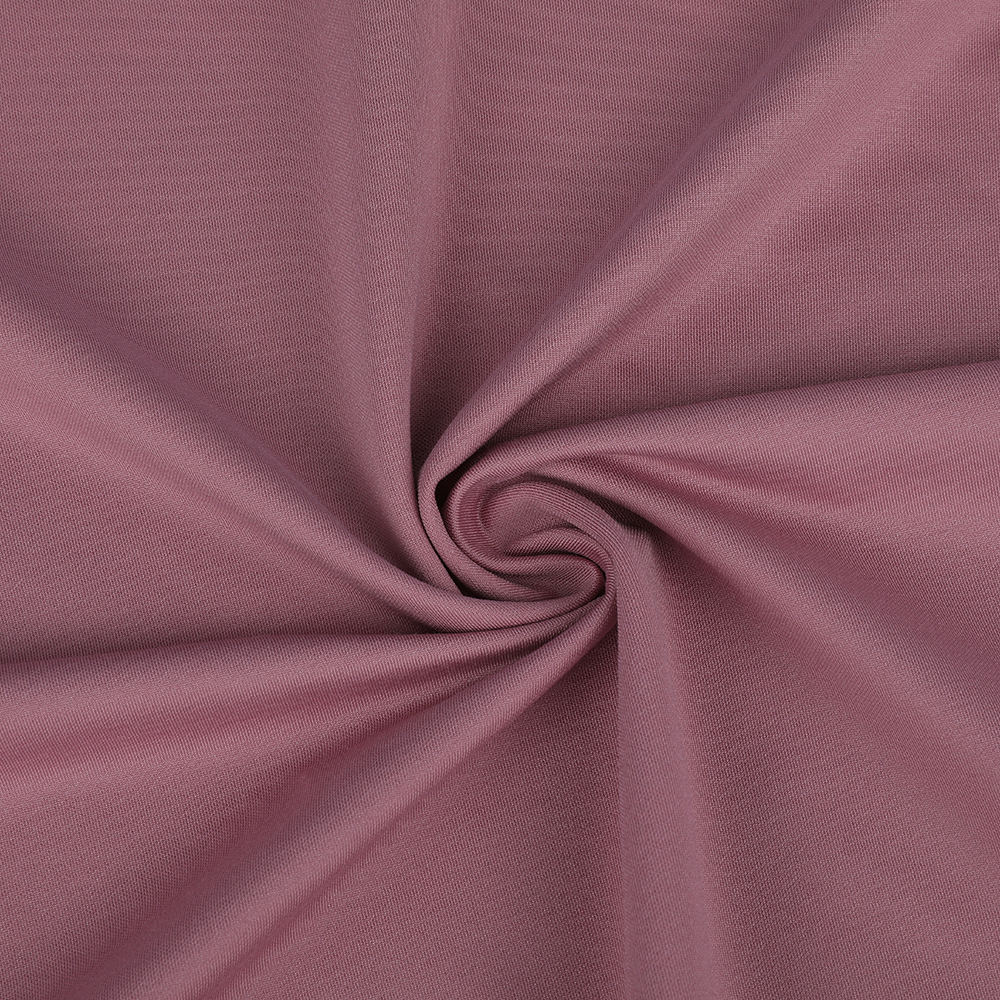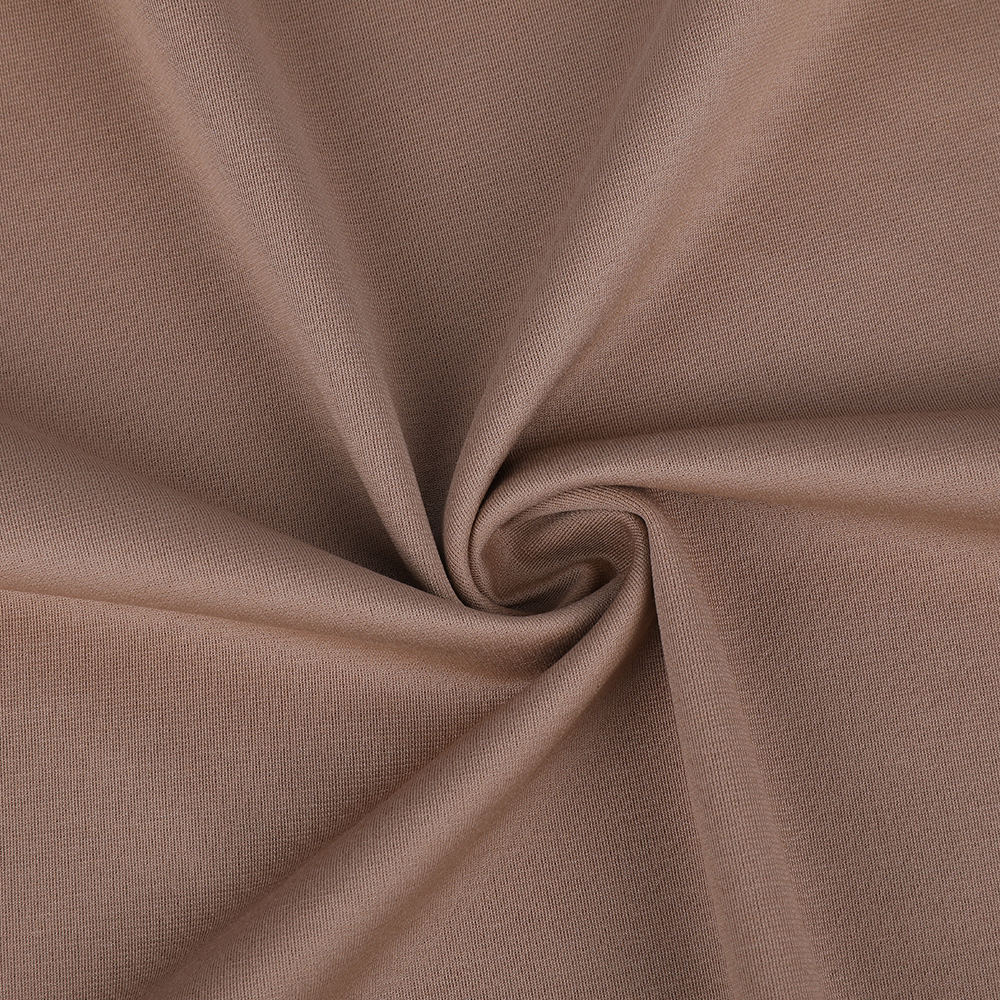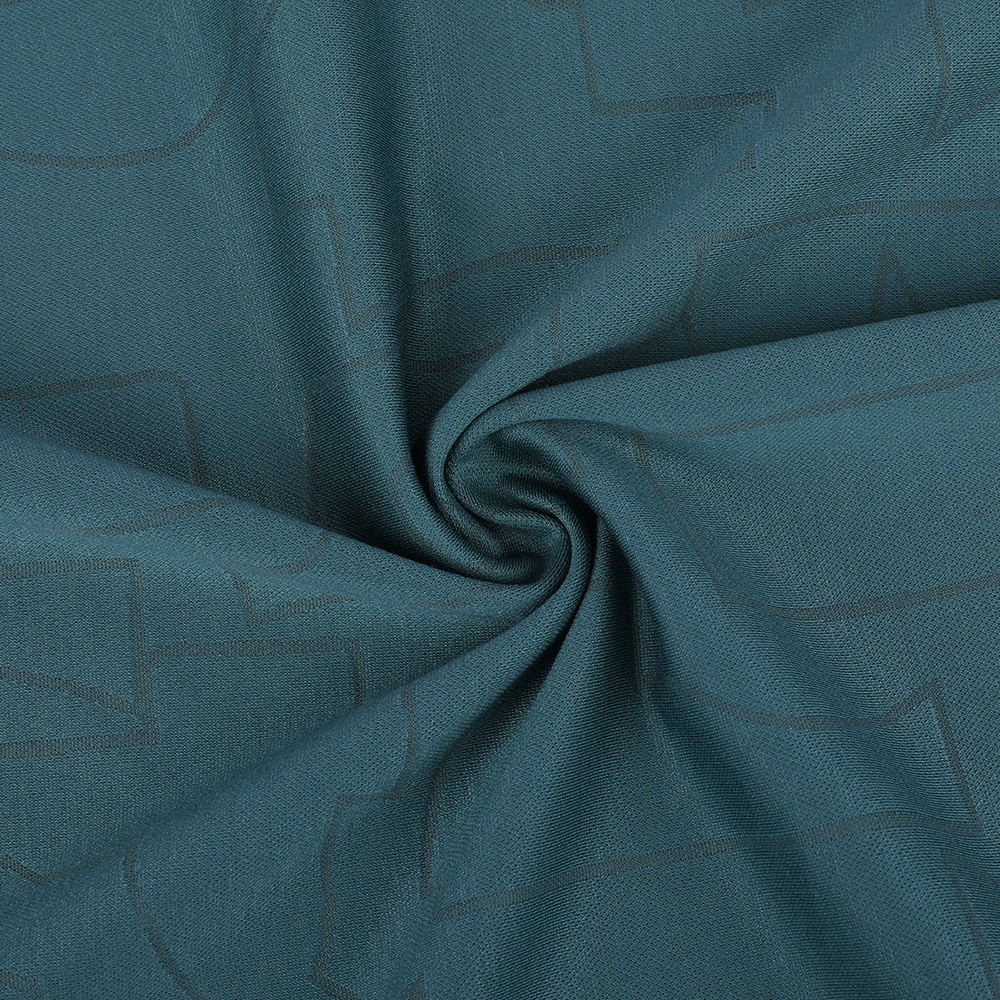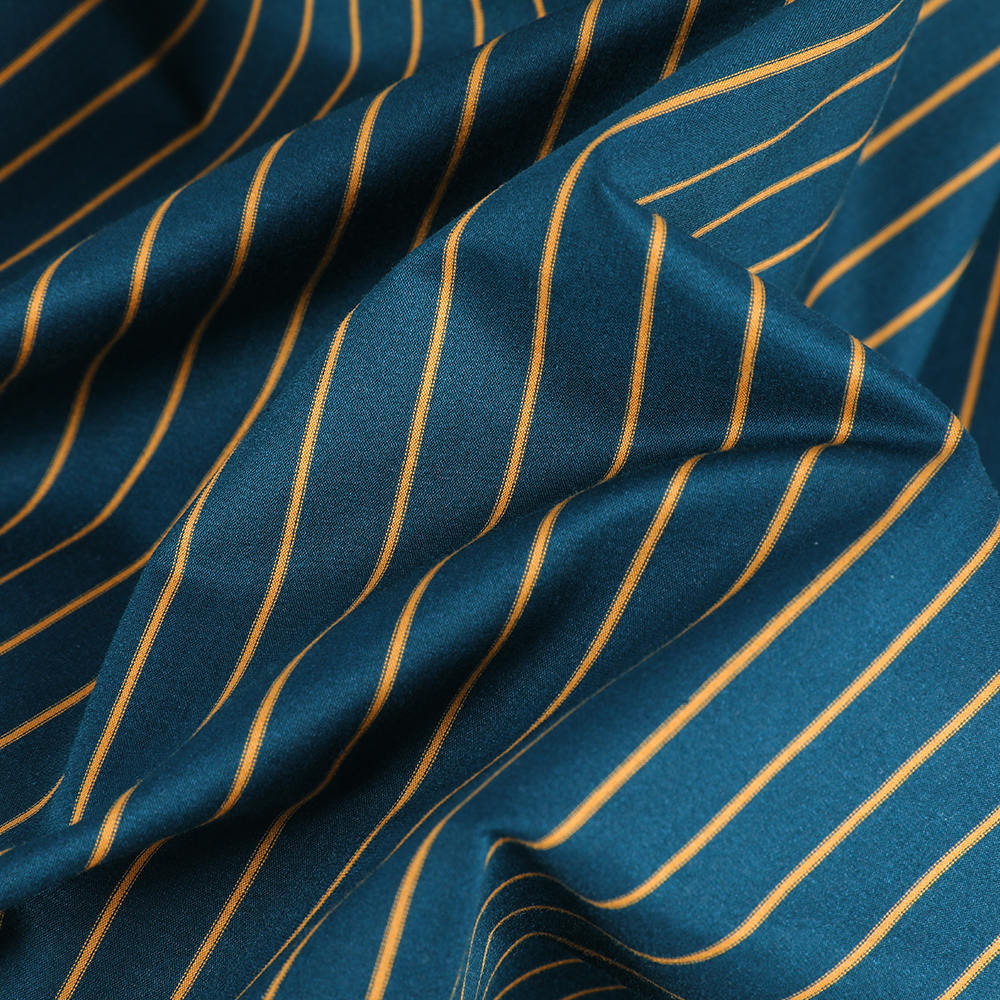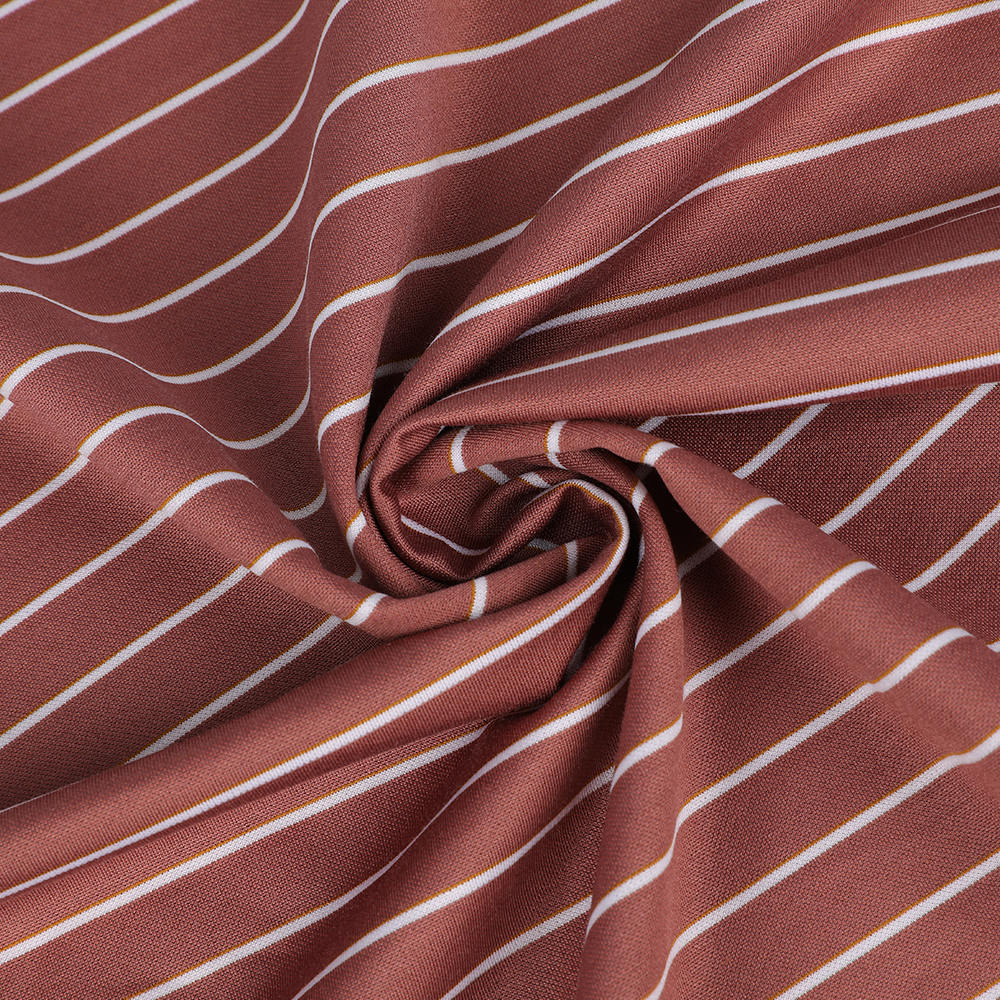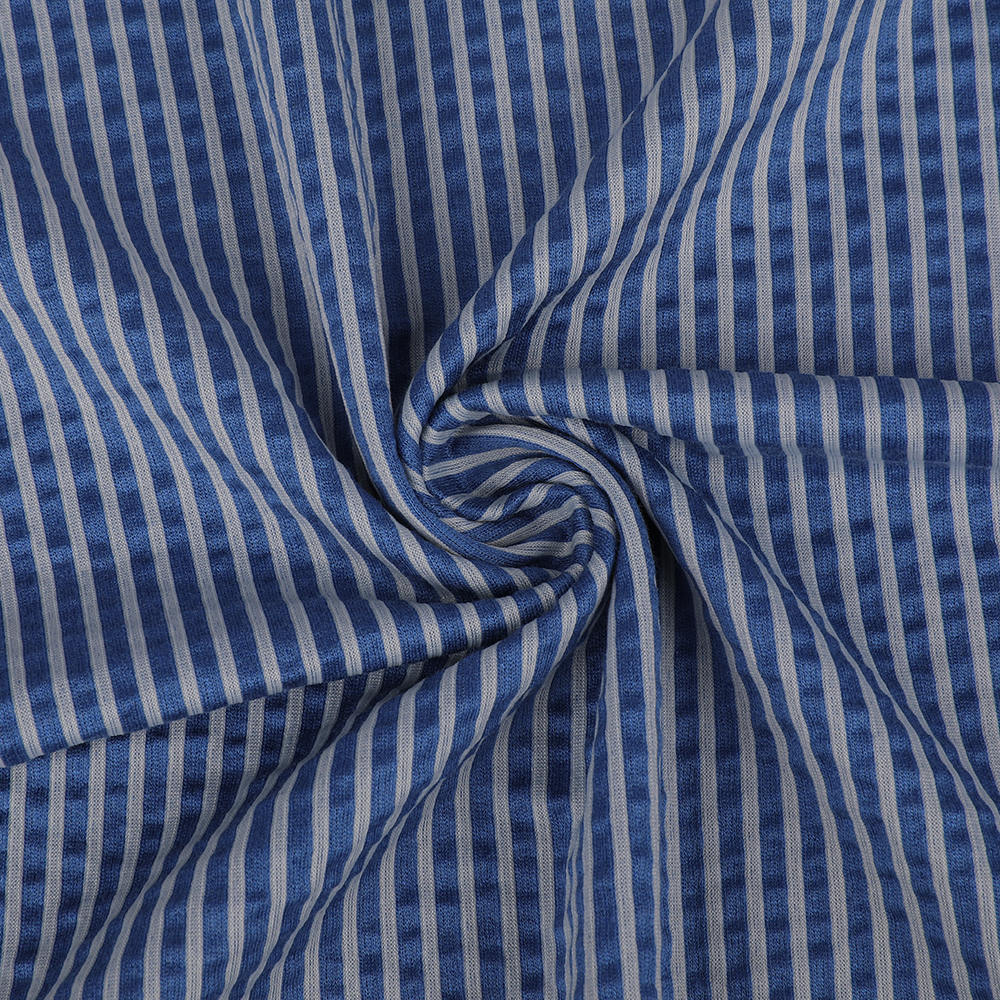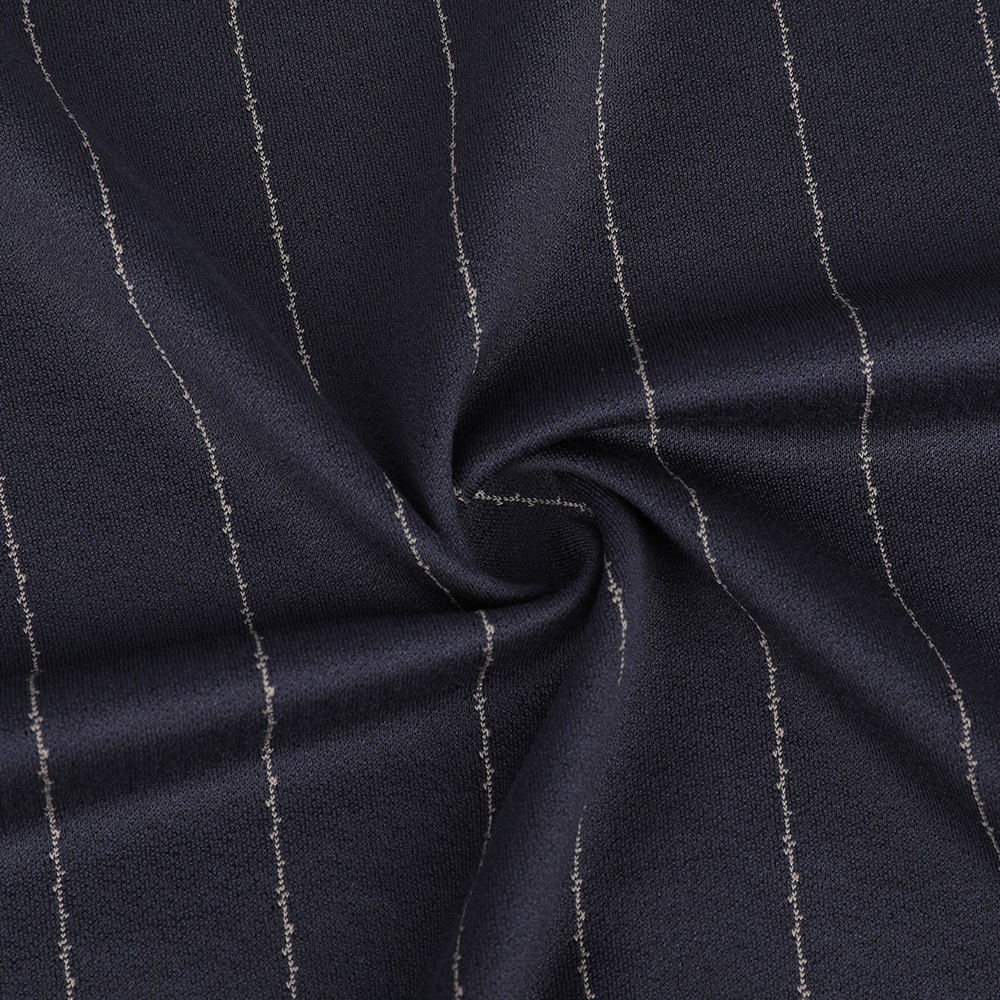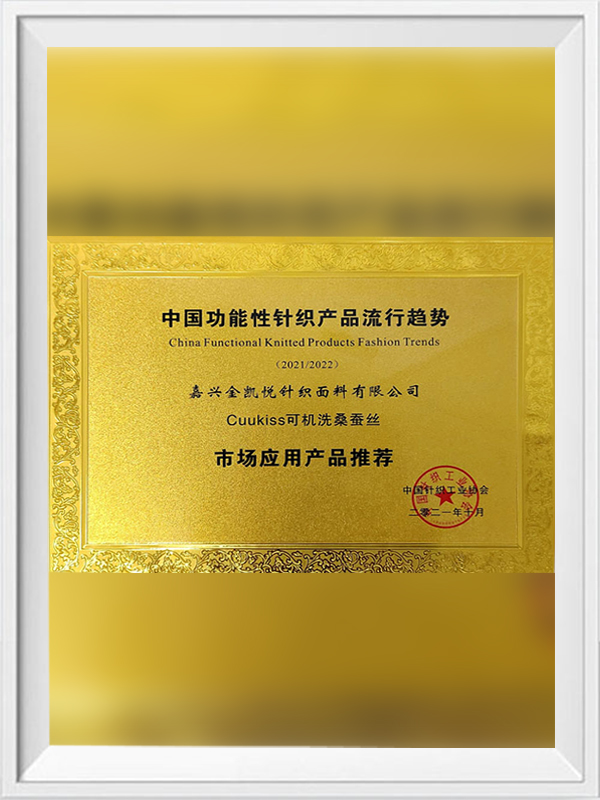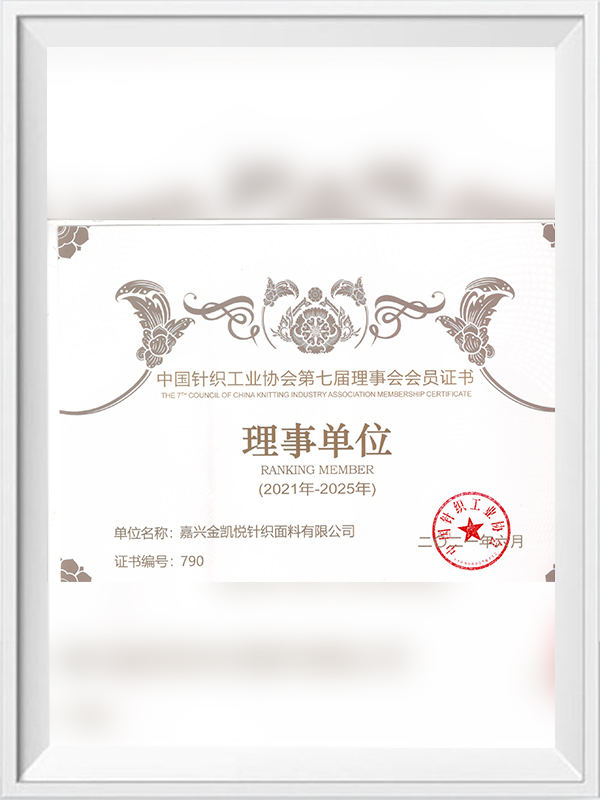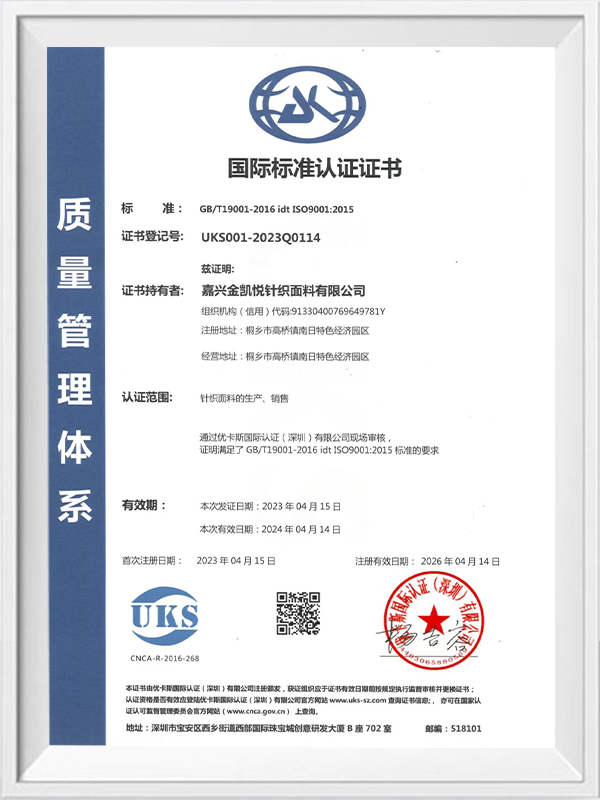Pourquoi les tissus de vêtements pour femmes haut de gamme deviennent un élément central de la conception de vêtements pour femmes haut de gamme Dans la conception de vêtements pour femmes haut ...
En savoir pluscoutume Tissu de chemise en coton en soie
Le tissu de chemise en coton de soie est un matériau mélangé qui combine les caractéristiques de la soie et du coton. Il est fait de soie de mûrier naturel et de fibres de coton de haute qualité. Il maintient non seulement la touche lisse, la bonne respirabilité et l'absorption de l'humidité et la fonction de transpiration de la soie, mais ont également la durabilité et la résistance aux rides du tissu de coton. Ce tissu est doux au toucher, confortable à porter et adapté à porter dans diverses conditions climatiques.
Les chemises en coton en soie ont généralement des textures délicates et des couleurs douces. Sa couleur est chaude et son éclat est naturel, ce qui peut montrer une beauté discrète et sobre. Sa bonne respirabilité et sa conduction d'humidité peuvent réguler efficacement la température corporelle et garder la peau sèche afin que vous puissiez rester détendu même si vous le portez pendant longtemps. Le tissu en coton de soie a été spécialement traité et a une bonne résistance aux rides et à l'usure. Il est facile de prendre soin et n'est pas facile à déformer même s'il est lavé à la machine, assurant la durabilité des vêtements.
-
Tissu de chemise en coton de soie luxueuse à respiration confortable
-
Tissu de chemise en coton en soie confortable ponte
-
Double Jacquard Soft Skin Friendly Silk Cotton Shirt Tissu
-
Spandex Jersey Skin-Friendly Soft Silk Cotton rayé LA Shirt Tissu
-
Tissu de chemise en coton en soie confortable à rayures
-
Coton de soie confortable écologique respirant en tissu de chemise de chemise Jacquard
-
Jacquard ajusté confortable en soie en soie en soie en soie
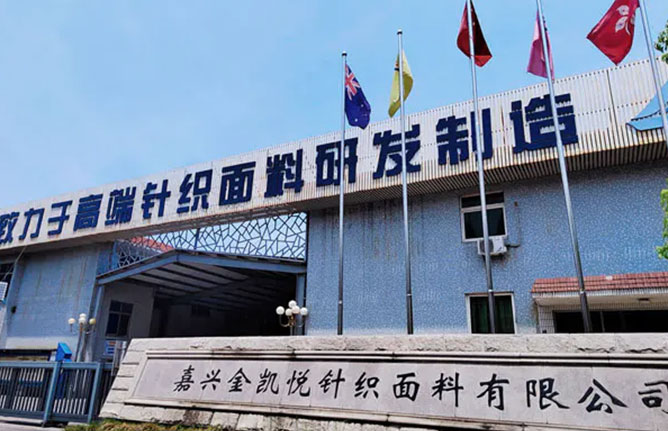
-
-
Dans le monde vaste et complexe des textiles, une catégorie se distingue par sa capacité inégalée à fusionner le confort avec la polyvalence: les tissus tricotés. Ces matériaux, formés à travers ...
En savoir plus -
Au fur et à mesure que les longues saisons d'automne et d'hiver se déroulent, la poursuite des vêtements par les gens s'étend au-delà du besoin fondamental de la chaleur. Au lieu ...
En savoir plus -
Dans la poursuite d’une vie de haute qualité, les choix de tissus des gens ne se limitent plus à la chaleur ou à la beauté, mais ont atteint une considération complète du toucheer, du confort, des ...
En savoir plus -
Dans le vaste monde des textiles, la laine a longtemps été considérée comme un symbole de luxe et de confort, chéris pour sa chaleur exceptionnelle et sa touche douce. Cependant, sa nature délicate...
En savoir plus
How to determine the optimal silk and cotton fiber blend ratio for silk-cotton shirt fabrics to achieve ideal softness, breathability and durability?
In the textile industry, the development and production of blended fabrics has always been a combination of technology and art. As the preferred material for high-end shirts, the balance of softness, breathability and durability of silk cotton shirt fabrics is a common focus of consumers and manufacturers. Jiaxing Jinkaiyue Knitted Fabric Co., Ltd., as a leader in the textile industry, is well aware of the importance of efficient management and integrated production processes, and also deeply understands the decisive influence of raw material selection and blending ratio on the performance of the final product.
Advantages and Challenges of Silk-Cotton Blending
Silk-cotton blended fabrics combine the dual advantages of silk and cotton fibers. Silk is known for its good gloss, softness, smoothness and good breathability, while cotton fibers are known for their strong moisture absorption, good wear resistance and good warmth retention. The combination of the two can theoretically create an ideal fabric that is both soft and breathable, and has a certain degree of durability. However, how to find the best blending ratio to maximize these properties is a major challenge in the production process.
Considerations for determining the optimal blending ratio
Softness: Silk is significantly softer than cotton, so increasing the proportion of silk can improve the softness of the fabric. However, too high a silk ratio may increase the fabric cost and may affect durability.
Breathability: Both silk and cotton fibers have good breathability, but silk is more breathable. However, breathability is also affected by the fabric structure and post-processing process.
Durability: Cotton fibers have high abrasion resistance and strength, so increasing the proportion of cotton fibers can improve the durability of the fabric. However, too much cotton fiber may reduce the softness and glossiness of the fabric.
Experimentation and optimization
In order to find the best silk-cotton blending ratio, manufacturers usually conduct a lot of experiments. The following is a possible experimental procedure:
Set the blending ratio range: Based on preliminary market research and production cost considerations, set a reasonable blending ratio range, such as 20% silk to 80% silk.
Make samples: Make fabric samples according to different blending ratios.
Performance testing: Test the samples for softness, breathability, and durability. The test methods include but are not limited to hand feel evaluation, air permeability tester and abrasion resistance test.
Data analysis: According to the test results, analyze the impact of different blending ratios on fabric performance.
Optimization and selection: According to the analysis results, select the best blending ratio. This is usually a balance point, that is, finding the best balance between softness, air permeability and durability.
Actual cases and recommended ratios
In actual production, the optimal ratio of silk-cotton blends often varies depending on product positioning, market demand and production costs. But in general, for shirt fabrics that pursue high-end texture and comfort, it is recommended to use a higher silk ratio, such as a blending ratio of 50% silk and 50% cotton fiber, or a higher blending ratio of 70% silk and 30% cotton fiber. Such a ratio can provide sufficient air permeability and a certain degree of durability while ensuring the softness and glossiness of the fabric.
In the development and production of silk-cotton shirt fabrics, Jiaxing Jinkaiyue Knitted Fabric Co., Ltd. has fully utilized its advantages in efficient management of raw materials and finished product storage and integration of production processes. The company strictly screens raw materials to ensure the high quality of silk and cotton fibers. At the same time, by optimizing the production process, improving production efficiency and reducing costs, it provides consumers with more cost-effective silk-cotton shirt fabrics.
Determining the optimal silk-cotton fiber blending ratio for silk-cotton shirt fabrics is a complex and meticulous process that requires comprehensive consideration of multiple factors such as softness, breathability and durability. Through scientific experiments and optimization steps, the best balance can be found to provide consumers with high-quality, cost-effective silk-cotton shirt fabrics.
Nos capacités de fabrication s'accompagnent de solides capacités de R&D, nous permettant de livrer un grand nombre de projets avec une meilleure qualité et des délais plus courts.
Capacités de fabrication
De solides capacités de fabrication améliorent votre compétitivité
-

Pour garantir une meilleure qualité, Jin Hyatt a investi dans des machines de pointe provenant d'Italie, d'Allemagne, de Suisse, du Japon et de Taiwan.
-

L'entreprise commercialise principalement une variété de matériaux, notamment la soie de mûrier, le coton ammoniac liquide, la laine, le cachemire, les tissus de sport de plein air et divers mélanges de fibres.
-

L'entreprise gère efficacement le stockage des matières premières et des produits finis, intègre l'ensemble du processus de production et améliore l'efficacité globale.
-

L'entreprise cible le marché haut de gamme avec des tissus tricotés de haute qualité et consacre 20 % de ses effectifs à la recherche et au développement pour améliorer la valeur et la compétitivité des produits.

 中文简体
中文简体
